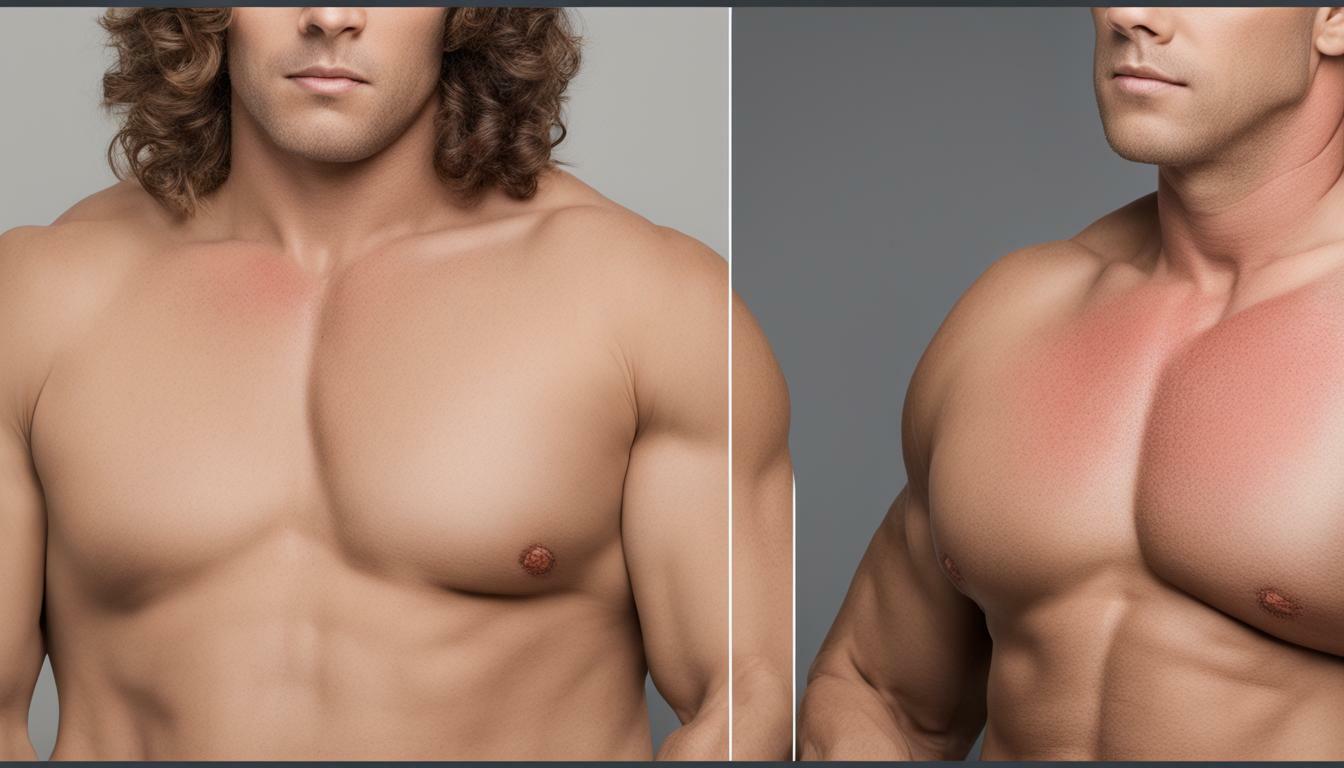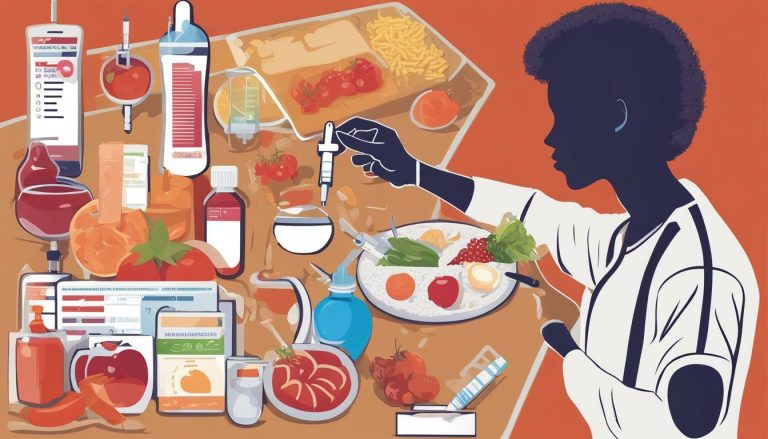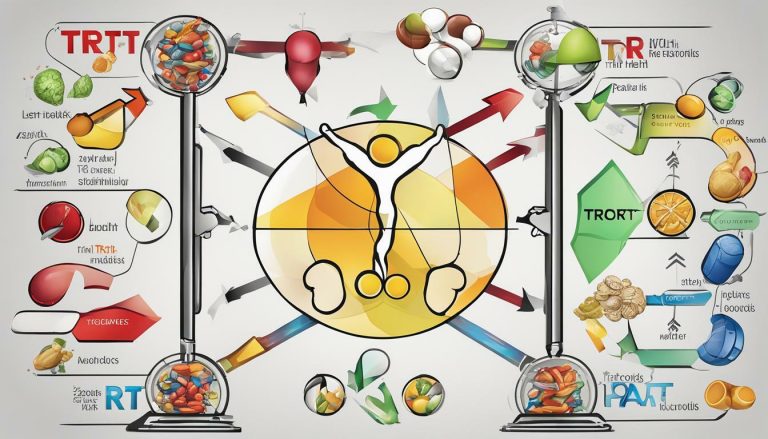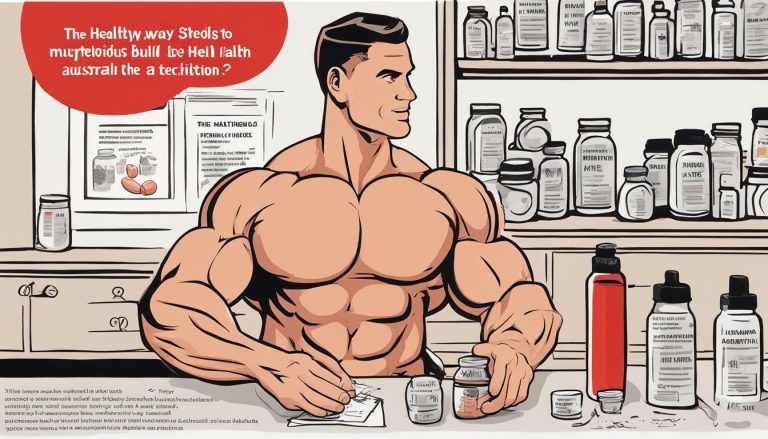Learn How to Reverse Thin Skin From Steroids | Australia Guide
Steroids are commonly used to treat various medical conditions, but they can have significant side effects, including thinning of the skin. This condition can make the skin more susceptible to injury and infection and can affect both the appearance and overall health of the skin.
If you are dealing with thin skin from steroids, it is essential to seek expert advice and guidance on how to reverse this condition. In this article, we will provide you with comprehensive information on how to restore thin skin caused by steroids.
Key Takeaways
- Thin skin is a common side effect of steroid use.
- Seeking expert advice is crucial to reverse this condition.
- There are specific steps and remedies recommended by Australian dermatologists and skincare experts to restore thin skin.
Understanding Steroid-Induced Thin Skin
Thin skin caused by steroids is a common condition that occurs when the use of steroids results in a reduction of collagen and elastin in the skin. Collagen and elastin are the two primary proteins responsible for skin’s strength and elasticity. When using steroids, these proteins can be depleted, causing the skin to become thin and fragile.
Other factors that contribute to thin skin include sun damage, aging, and genetics. However, steroid use is one of the leading causes.
Implications of Thin Skin on Overall Skin Health
Thin skin can lead to a number of issues, including an increased risk of injury and prolonged healing times. It can also cause the skin to become more sensitive and easily irritated, and can lead to the formation of wrinkles and fine lines.
Fortunately, there are several treatments available for thin skin caused by steroid use. These treatments can help to restore the skin’s strength and improve overall skin health.
Thin Skin Treatment Options in Australia
There are various treatment options for reversing thin skin caused by steroids available in Australia. These include:
- Topical treatments: These include retinoids, vitamin C, and peptides that help to stimulate collagen production and improve skin texture.
- Laser therapy: This involves the use of lasers to stimulate collagen production and improve skin texture.
- Platelet-rich plasma (PRP) therapy: This involves the injection of a patient’s own blood plasma, which contains growth factors that stimulate collagen production in the skin.
It is important to consult with a dermatologist or skincare expert to determine the best course of treatment for your specific skin concerns and needs.
Along with these treatments, there are several lifestyle changes and remedies that can be implemented to support the reversal of steroid-induced thin skin. These will be discussed in further detail in the following sections.
Reversing Thin Skin: Expert Recommendations
Reversing thin skin caused by steroids can be a gradual process. It requires patience, consistency, and seeking the right advice from professionals. Here are some expert recommendations to restore thin skin:
1. Hydration and Moisturization
Drinking plenty of water and avoiding prolonged exposure to hot water can help hydrate the skin and prevent further thinning. Applying a moisturizer regularly after cleansing can also help restore the skin’s natural barrier function, making it more resilient and less prone to damage. Look for moisturizers containing ingredients such as ceramides, hyaluronic acid, and glycerin.
2. Topical Steroids
While topical steroids can contribute to thin skin, they can also help reverse it when used appropriately. Dermatologists may prescribe a low-potency topical steroid cream or ointment to be applied to the affected areas for a short period. It is important to follow the instructions carefully and only use the prescribed amount to avoid side effects such as skin thinning or discoloration.
3. Vitamin A derivatives
Retinoids, which are derived from vitamin A, can improve skin texture and thickness. They work by increasing collagen production and reducing inflammation. However, they can also cause skin irritation and dryness if not used correctly. Dermatologists may recommend using a low-potency retinoid cream or serum and gradually increasing the frequency of use over time.
4. Sun Protection
Protecting the skin from the sun’s harmful rays is essential for skin health, especially when dealing with thin skin caused by steroids. Dermatologists recommend using a broad-spectrum sunscreen with an SPF of at least 30 and reapplying every two hours when outdoors. Wearing protective clothing and staying in the shade can also help prevent further damage.
5. Gentle Skincare
Avoiding harsh or abrasive skincare products can prevent further thinning of the skin. Dermatologists recommend using mild, fragrance-free cleansers and avoiding exfoliants or scrubs. Additionally, using a non-soap cleanser and avoiding hot water can help prevent further damage or irritation.
6. Consult with a Dermatologist
It is crucial to consult with a dermatologist for individualized advice on how to restore thin skin caused by steroids. They may recommend additional treatments, such as laser therapy or dermal fillers, depending on the severity of the condition. Dermatologists can also provide guidance on how to prevent thin skin from steroids and maintain healthy skin.
Skincare Routine for Thin Skin Recovery
A tailored skincare routine is crucial for reversing thin skin caused by steroids. A comprehensive regimen includes gentle cleansing, moisturizing, and the use of specific skincare products suitable for thin skin. Australian brands and products are highly recommended for their suitability to the Australian climate and skin types.
When selecting skincare products, look for those labeled as “gentle” or “for sensitive skin.” Avoid products containing alcohol, fragrances, or harsh chemicals that can further irritate delicate skin.
Begin your routine with a gentle cleanser, using lukewarm water to avoid further thinning of the skin. Pat the skin dry with a soft towel, being careful not to rub or tug. Follow with a moisturizer containing nourishing ingredients such as ceramides, hyaluronic acid, or glycerin to help restore the skin’s natural barrier.
In addition to cleansing and moisturizing, other products can assist in thin skin treatment. These include natural remedies such as aloe vera gel, chamomile, or vitamin E oil, which can help soothe and heal the skin. Products containing retinoids, such as tretinoin or adapalene, can also improve the skin’s texture and thickness. Dermatologist advice should be sought before using products containing retinoids.
Remember to always use sunscreen when going outside, as thin skin is more susceptible to sun damage. Look for a broad-spectrum, minimum SPF 30+ sunscreen that is suitable for sensitive skin.
Your skincare routine should be consistent, with products and practices that aid in reversing thin skin. Complementing this routine with a healthy lifestyle, such as regular exercise and a balanced diet, can further support the skin’s health.
Lifestyle Changes for Improved Skin Health
To support the reversal of steroid-induced thin skin, certain lifestyle changes can be made. Here are some recommended habits:
Eat a Balanced Diet
Eating a balanced diet can promote skin health and support the reversal of thin skin. Consuming foods rich in vitamin C, vitamin E, and zinc can help to produce collagen and elastin, which are essential for healthy skin.
Exercise Regularly
Regular exercise promotes healthy circulation and can help your skin to look and feel better. Exercise also reduces stress levels, which can improve overall skin health.
Manage Stress
Stress can affect skin health, including the development of thin skin. Managing stress through practices such as mindfulness, yoga, or meditation can benefit overall skin health.
Avoid Smoking and Drinking
Smoking and drinking can have negative effects on skin health, including the development of thin skin. Quitting smoking or limiting alcohol intake can promote skin health, including the reversal of thin skin.
Protect Skin from the Sun
Exposure to the sun can cause damage to the skin, including thinning. Protecting your skin from the sun’s harmful rays by wearing protective clothing and applying sunscreen can prevent further damage to the skin.
Get Enough Sleep
Sleep promotes skin health and helps the body to repair itself. Getting enough sleep can benefit overall skin health and support the reversal of thin skin.
By implementing these habits, you can improve your overall skin health and support the reversal of steroid-induced thin skin. Remember to always consult with a dermatologist or skincare expert in Australia for personalized advice.
Conclusion
Reversing thin skin caused by steroids is a complex issue that requires a comprehensive approach. As we’ve explored in this article, understanding the underlying factors and seeking expert advice in Australia is critical to achieving the best possible outcome.
Whether it’s through medication changes or adjusting your skincare routine, there are various treatments available to help reverse thin skin. Additionally, incorporating healthy lifestyle habits can further support the recovery process.
It’s important to remember that restoring thin skin takes time, so patience is essential. By following a tailored approach and seeking ongoing support from professionals in Australia, you can effectively treat and reverse steroid-induced thin skin.
Expert Support in Australia
If you’re struggling with thin skin caused by steroids, know that you’re not alone. There are numerous resources and professionals available in Australia who can provide support and guidance throughout your recovery journey.
From dermatologists to skincare experts, there are many specialists who can assist in developing an effective treatment plan tailored to your individual needs.
Remember, taking care of your skin is a lifelong journey, and seeking out support from experts in Australia can help ensure that you achieve and maintain optimal skin health.






